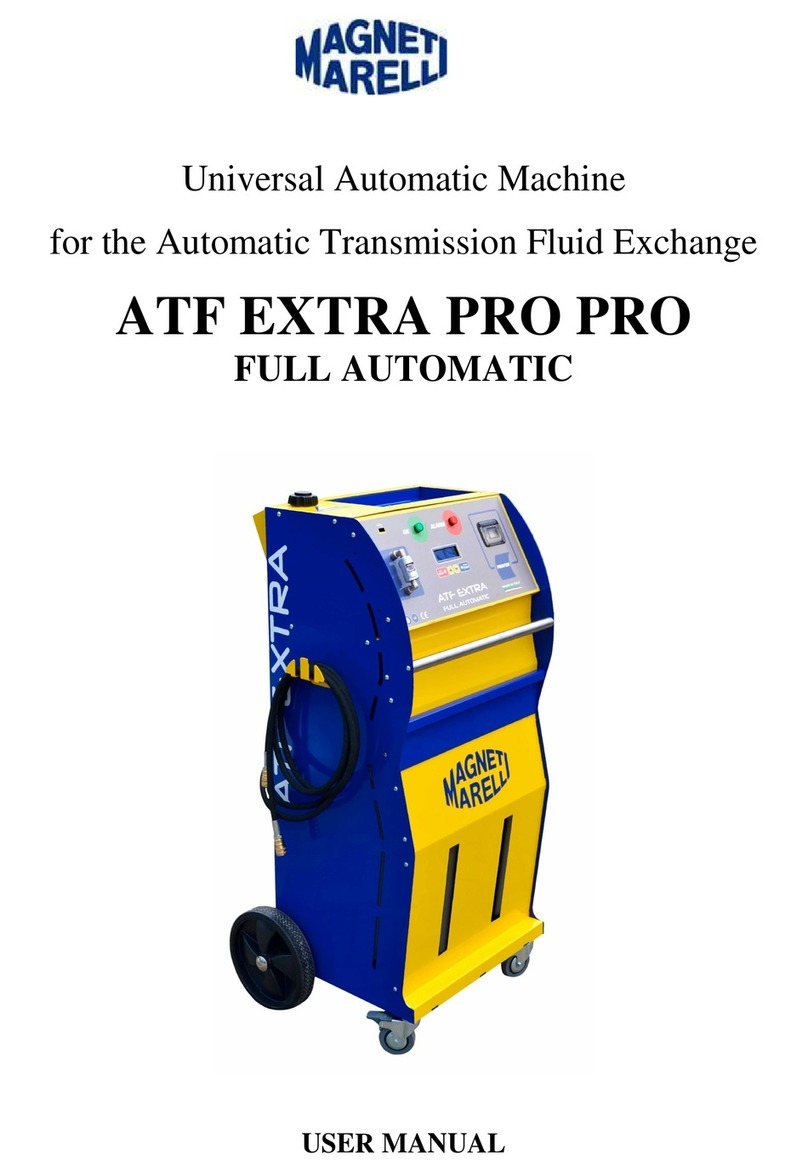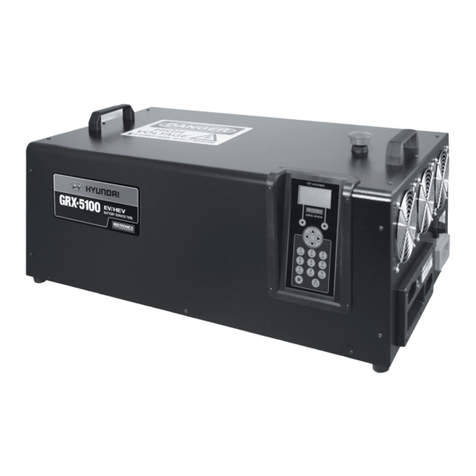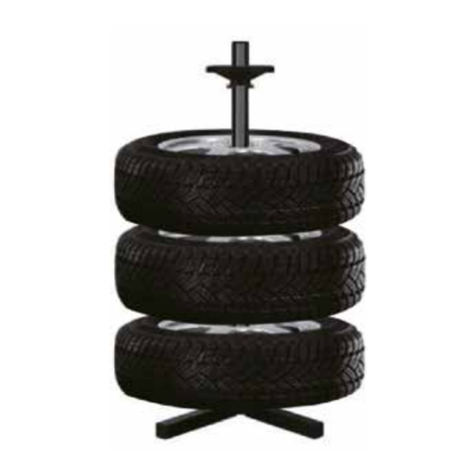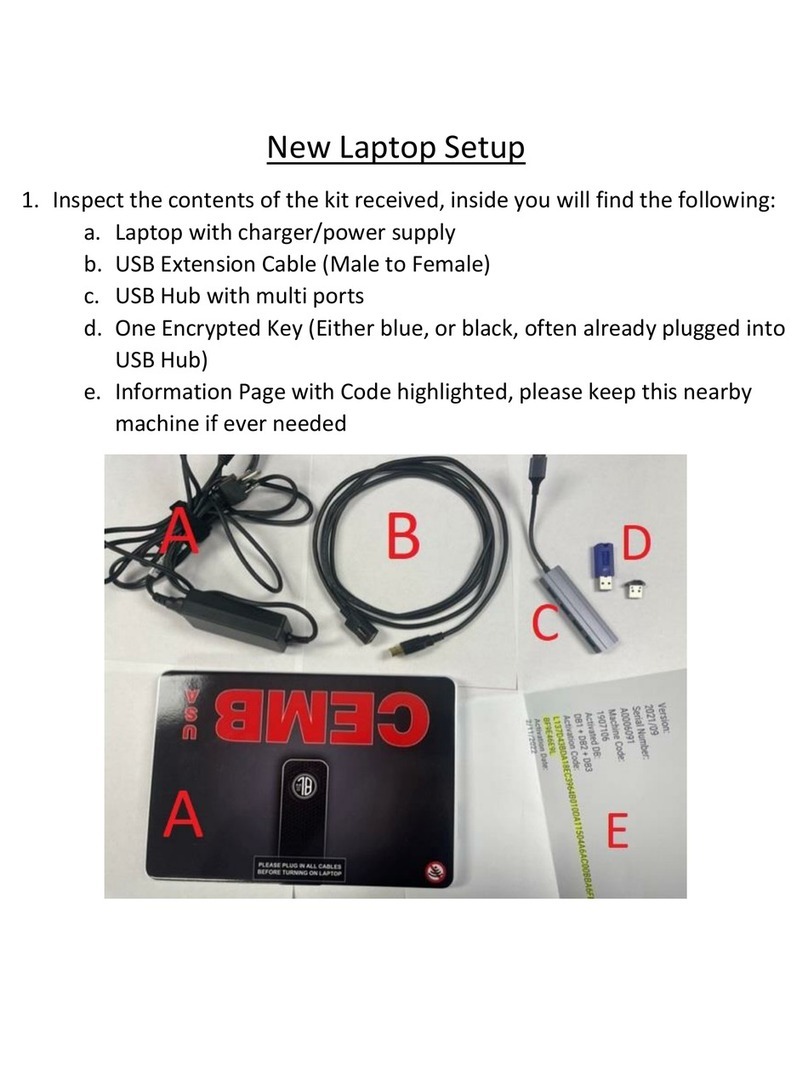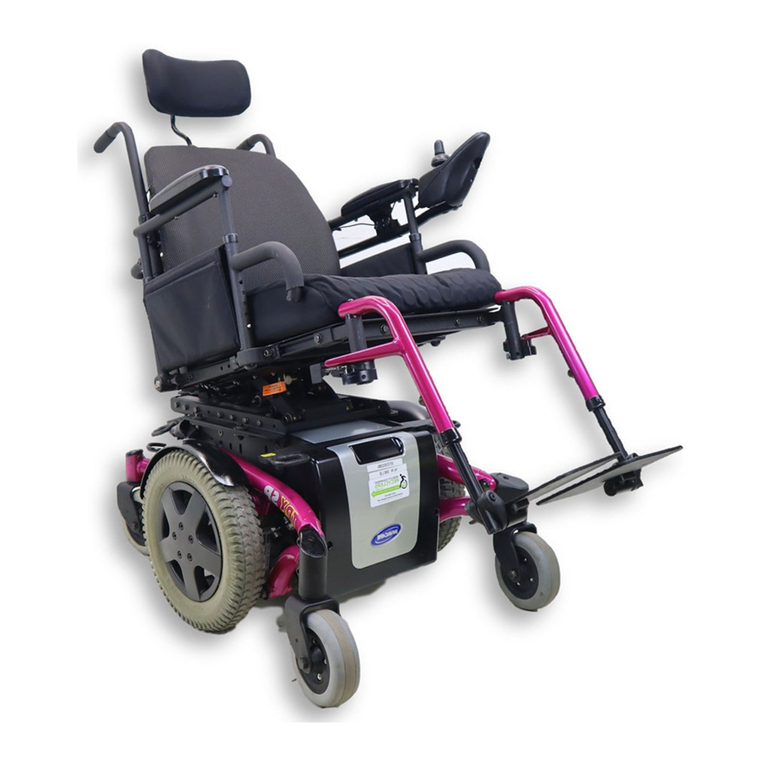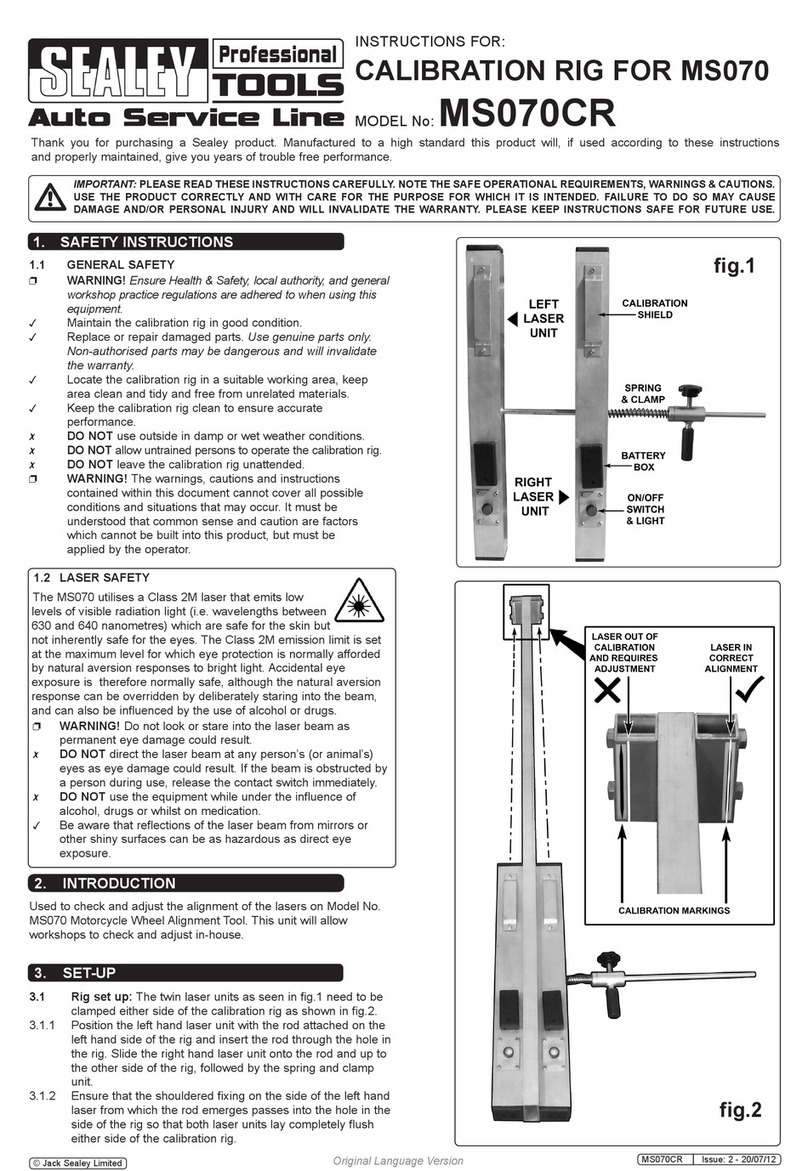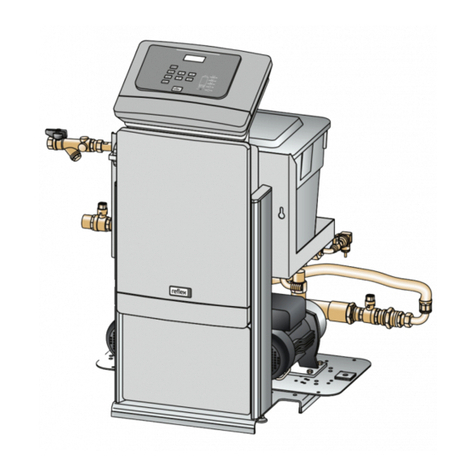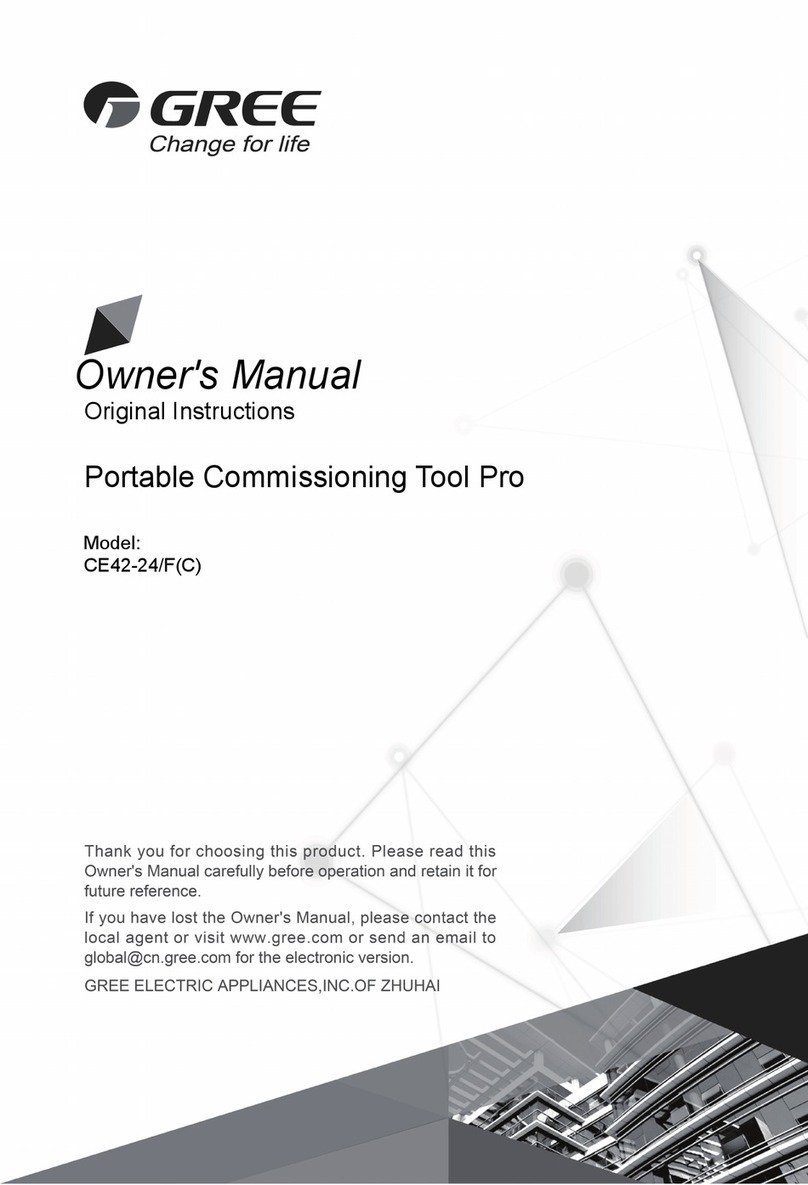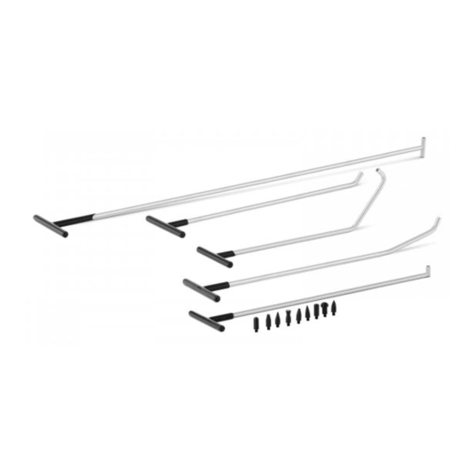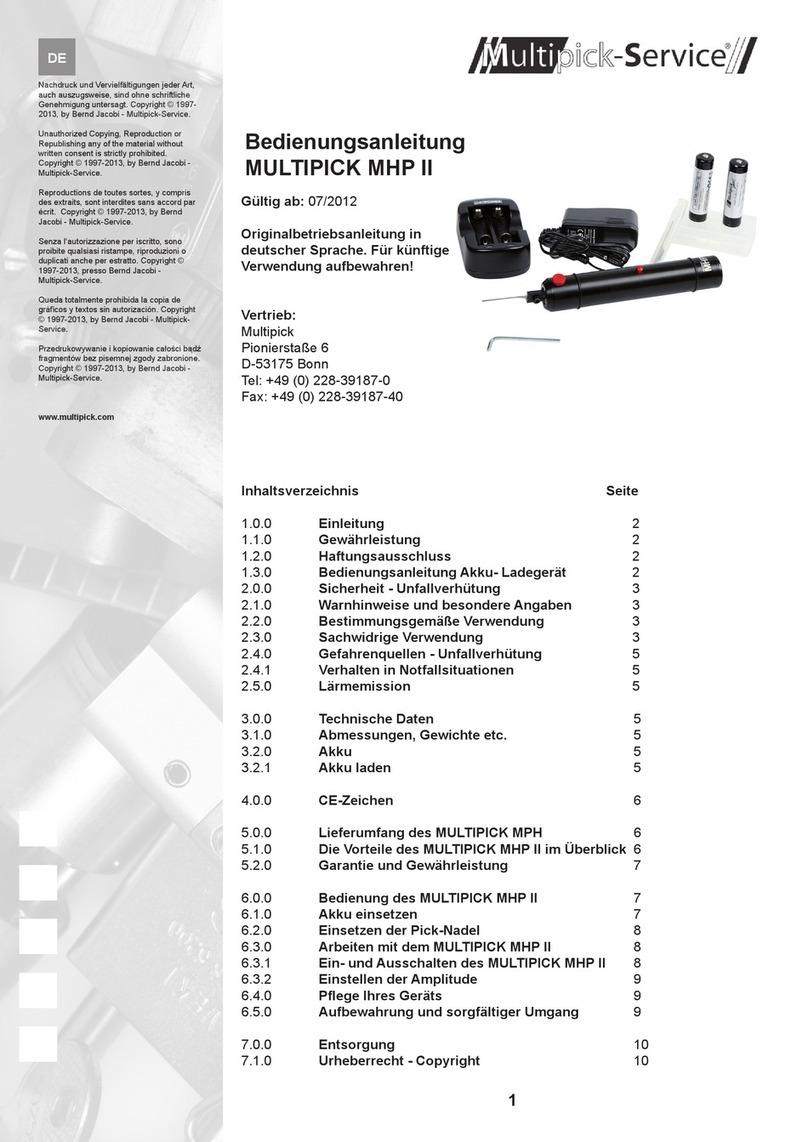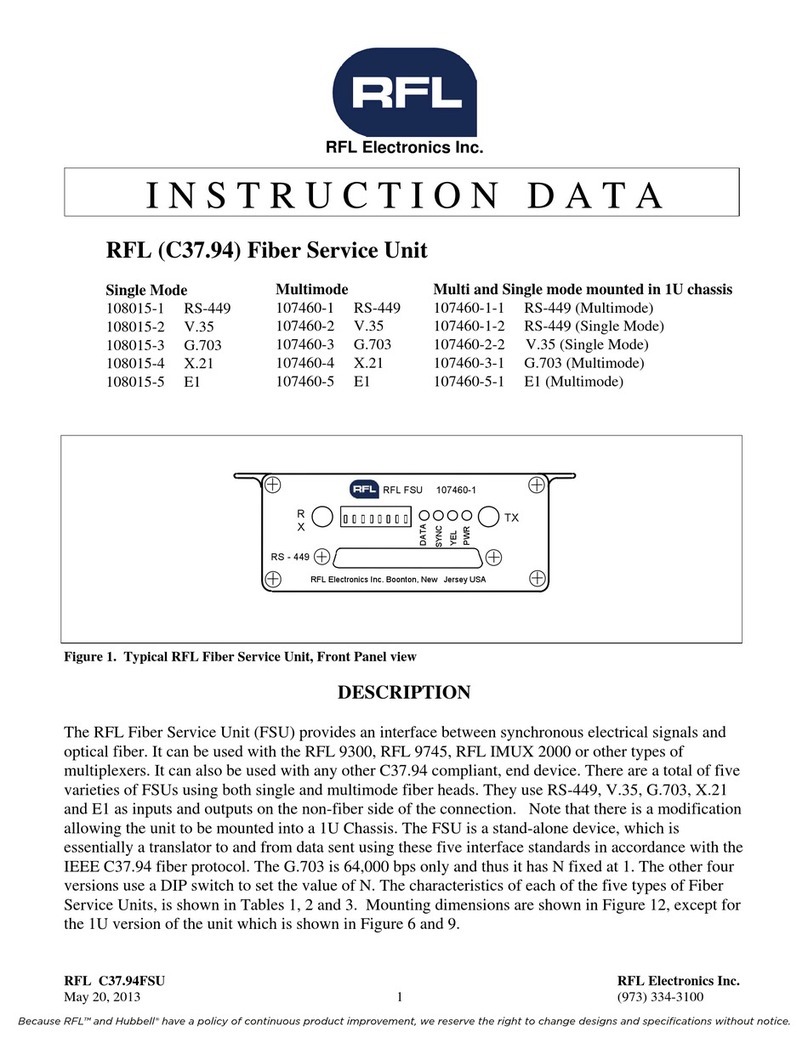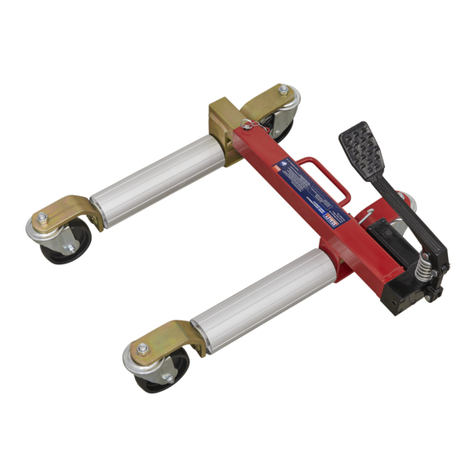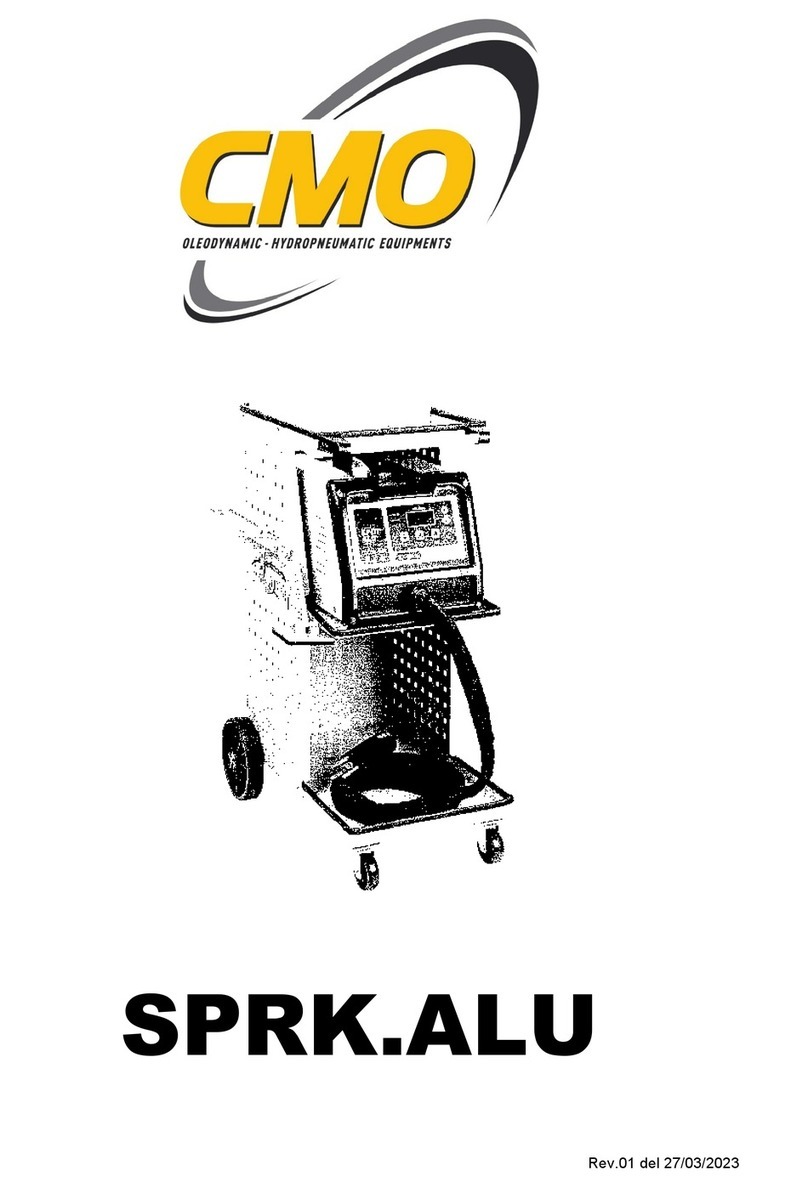INTAKE CLEANING
1. PREPARATION OF THE 4-WAY FLUX
Open the filler cap (19) and add 1Lof XENUM I-FLUX FLUID (ref:
6124001) into the reservoir for 4 cylinder and 1,5L for larger engines.Only
XENUM I-FLUX FLUID will provide optimum result. Usage of other
chemicalsmay causedamageand will not clean the intake system properly.
2. PREPARATION OF THE CAR
•Scan the engine for trouble codes.
•Check the oil level of the engine oil.
•Check the cooling system and liquid level.
• Add 1 can of XENUM Ultimax Diesel Conditioner to the fuel reservoir
(REF: 3222350) For cars equipped with Diesel Particle Filter we recom-
mend XENUM Full Detox Diesel or In&Out Cleaner (REF: 3192015) in
severe cases. ATTENTION: In case that In&Out Cleaner is applied, it’s
instructions should be followed only AFTER the treatment.
• Disconnect the air hose between intercooler and the inlet manifold (on
atmospheric engine the hose between air box and inlet manifold).
•Disconnect the EGR valve to prevent it to open during the cleaning
process. => Check if the EGR valve is closed.
• Switch off all power-consuming accessories such as air conditioning,
heated seats etc.
•Start the engine and accelerate a few times. Make sure that after accel-
eration it immediately returns to idle.
3. CLEANING OPERATION
•Connect the 4-WAY FLUX power cable to the car’s battery.
•Start the engine.
• Choose the right size of plate and position the venturi against the inlet
manifold. The vacuum will keep it in place.
• Adjust the venturi precisely: open the choke screw. Then gradually re-
duce the airflow: close the choke screw by turning it clockwise until the
engine idle drops. Then reopen it slightly by turning it 90° counter clock-
wise. Lock the choke screw with the lock nut.
•Turn the power switch on (2).
•Set the Pulse/min selector (1) on level 30 to start with.
•The potentiometer must be adjusted in order to have a smooth idle run of
the engine; speed could be slightly increased during the treatment. If en-
gine knocking is noticed, the FLUX should be decreased until the engine
runs smoothly. Higher FLUX rates will shorten the treatment time; lower
rates will improve the result.
•If no fluid comes out of the 4-WAY FLUX, check if the engine is producing
enough vacuum. Also check the 4-WAY FLUX tubes for damage or leaks
witch can cause vacuum losses. The supply of the chemical for the
treatment depends entirely on the vacuum.
•Leave the engine to run at idle for 1 to 2 hours (for different engines) until
the fluid is consumed entirely.
• If the inlet manifold is equipped with a butterfly valve, turn the venturi on
180° open each 20 min.
• When the fluid is consumed, leave the engine running on idle for 15 min.
without removing the venturi, opening the choke screw to maximum air-
flow. This operation is to help eliminating cleaning fluid inside the inlet
manifold. (make sure there is no fluid left after the treatment).
• Switch off the 4-WAY FLUX power. Remove the venturi, stop the engine
and disconnect the 4-WAY FLUX from the car battery.
• See 5.3 of this manual before next step.
• Reconnect the EGR valve and replace the air hose to the inlet manifold.
• Start the engine; let it run on idle for minimum 5min.
• Scan the engine for trouble codes and delete possible error codes if
necessary.
•Take the car for a test-drive. Heavy smoke from the exhaust can be ob-
served for some time due to the cleaning process that is still active in the
exhaust system of the engine.
•ATTENTION: Before testing the vehicle make sure there is no trace of
I-FLUX cleaning fluid left inside the intake system.
4. SERVICING THE 4-WAY FLUX
The 4-WAY FLUX has been designed for minimum maintenance and maxi-
mum reliability. But we recommend following these simple instructions:
• Make sure that after the cleaning operation all the I-FLUX FLUID has
been removed from the tank and hoses.
•After operation, clean the venturi with a degreaser.
•Keep stored in a dry and dust free environment.
5. WARNING
5.1 IMPORTANT: 4-WAY FLUX system is designed for cleaning the air
intake system by vaporising the chemicals through the venturi directly at the
in- take collector’s inlet. It is not permissible for use in any kind of operations
through the turbocharger or intercooler.
5.2 IMPORTANT: I-FLUX fluid is flammable. Avoid leaking during the treat-
ment on hot parts of the engine. Make sure the device is positioned stable
and the venturi/restrictor will not come off the inlet manifold during thetreat-
ment. Keep every part of the 4-WAY FLUX at a safe distance from the hot
parts of the engine, such as exhausts, turbo, catalyser or DPF. Never leave
the car unattended.
5.3 IMPORTANT: In some cases there might be oil leaking from the turbo
compressor’s seal.
During the treatment, leaked oil might have accumulated in the disconnect-
ed intake hose. Make sure there is no remaining oil in the intake system
before assembling the hoses. Remaining oil residues could cause uncon-
trolled revving of the engine and result in severe damage.
Remove it by revving the engine while keeping a cloth in front of the con-
necting hose before reconnecting it to the intake collector. We strongly rec-
ommend replacing the leaking seal since it could (partly) be responsible for
deposits in the intake system and cause engine malfunctioning or damage.
5.4 IMPORTANT: Never run the engine without the venturi while there isstill
cleaning solvent in the collector. Remaining solvent could cause uncon-
trolled revving of the engine and result in severe damage. If doubts exist,
use an endoscope to inspect the collector. If any doubt persists, contact the
Xenum technical department.
5.5 IMPORTANT: If any unusual noises (detonations) from the engine are
observed during the I-FLUX treatment, immediately stop the treatment by
shutting down the power of the 4-WAY FLUX. Let the engine turn a while
with the venturi still connected to the engine. If the detonations are gone
restart the 4-WAY FLUX, start to continue on lower FLUX level.
5.6 IMPORTANT: If for some reason the treatment has to be interrupted
while in process, for example when the base idle of the engine start to
increase during the treatment, immediately stop the treatment and proceed
as follows:
•Shut down the power of the 4-WAY FLUX.
•Try to drop down manually the base idle of the engine by closing the choke
screw from the venturi by turning it clockwise until the engine idle drops.
•Wait a few minutes to check if the base idle of the engine stays normal.
•Restart the I-FLUX, continue on lower FLUX level by adjusting the poten-
tiometer.
XENUM cannot be held responsible for damage due inappropriate use of
the 4-WAY FLUX system. Warning directives should be strictly followed.
